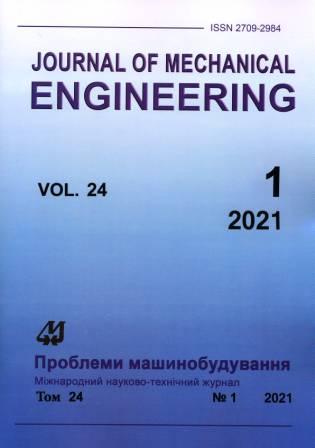Analytical Solution of the Problem of Symmetric Thermally Stressed State of Thick Plates Based on the 3D Elasticity Theory
Abstract
An important place among thermoelasticity problems is occupied by the plane elasticity problem obtained from the general three-dimensional problem after using plane stress state hypotheses for thin plates. In the two-dimensional formulation, this problem has become widespread in the study of the effect of temperature loads on the stress state of thin thermosensitive plates. The article proposes a general three-dimensional solution of the static problem of thermoelasticity in a form convenient for practical application. To construct it, a particular solution of the inhomogeneous equation, the thermoelastic displacement potential, was added by us to the general solution of Lamé's equations, the latter solution having been previously found by us in terms of three harmonic functions. It is shown that the use of the proposed solution allows one to satisfy the relation between the static three-dimensional theory of thermoelasticity and boundary conditions, and also to construct a closed system of partial differential equations for the introduced two-dimensional functions without using hypotheses about the plane stress state of a plate. The thermoelastic stress state of a thick or thin plate is divided into two parts. The first part takes into account the thermal effects caused by external heating and internal heat sources, while the second one is determined by a symmetrical force load. The thermoelastic stresses are expressed in terms of deformations and known temperature. A three-dimensional thermoelastic stress-strain state representation is used and the zero boundary conditions on the outer flat surfaces of the plate are precisely satisfied. This allows us to show that the introduced two-dimensional functions will be harmonic. After integrating along the thickness of the plate along the normal to the median surface, normal and shear efforts are expressed in terms of three unknown two-dimensional functions. The three-dimensional stress state of a symmetrically loaded thermosensitive plate was simplified to the two-dimensional state. For this purpose, we used only the hypothesis that the normal stresses perpendicular to the median surface are insignificant in comparison with the longitudinal and transverse ones. Displacements and stresses in the plate are expressed in terms of two two-dimensional harmonic functions and a particular solution, which is determined by a given temperature on the surfaces of the plate. The introduced harmonic functions are determined from the boundary conditions on the side surface of the thick plate. The proposed technique allows the solution of three-dimensional boundary value problems for thick thermosensitive plates to be reduced to a two-dimensional case.
Downloads
Published
Issue
Section
License
Copyright (c) 2021 В. П. Ревенко

This work is licensed under a Creative Commons Attribution-NoDerivatives 4.0 International License.
All authors agree with the following conditions:
- The authors reserve the right to claim authorship of their work and transfer to the journal the right of first publication of the work under the license agreement (the agreement).
- Authors have a right to conclude independently additional agreement on non-exclusive spreading the work in the form in which it was published by the jpurnal (for example, to place the work in institution repository or to publish as a part of a monograph), providing a link to the first publication of the work in this journal.
- Journal policy allows authors to place the manuscript in the Internet (for example, in the institution repository or on a personal web sites) both before its submission to the editorial board and during its editorial processing, as this ensures the productive scientific discussion and impact positively on the efficiency and dynamics of citation of published work (see The Effect of Open Access).

